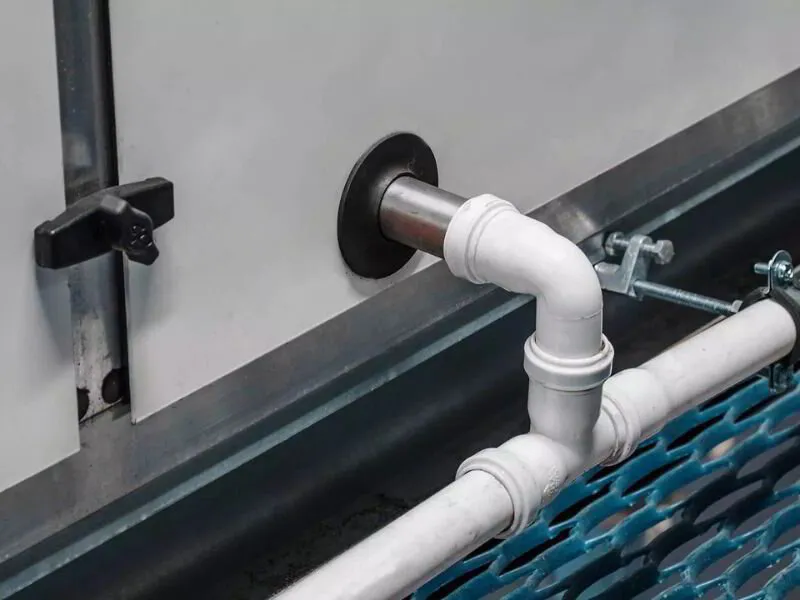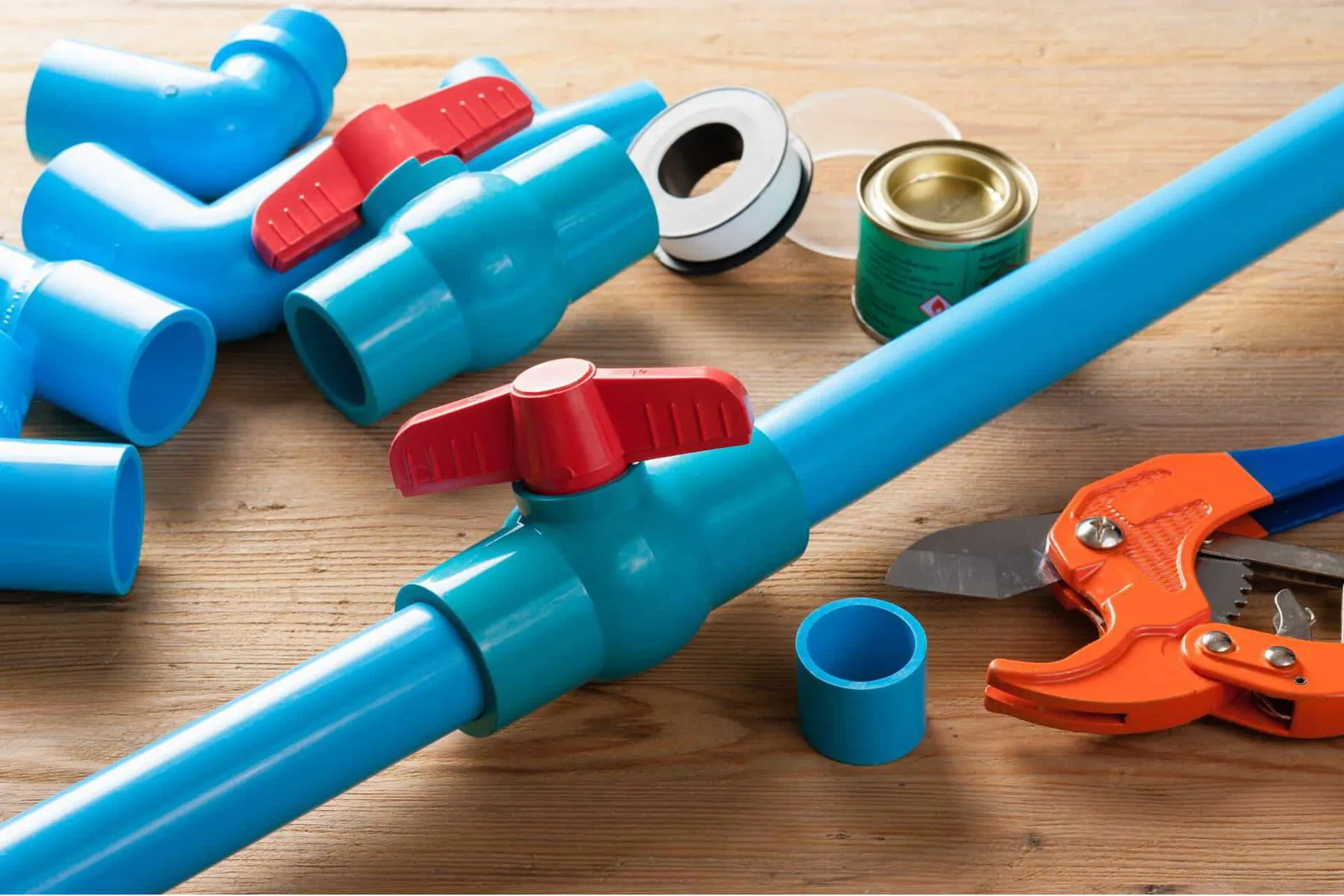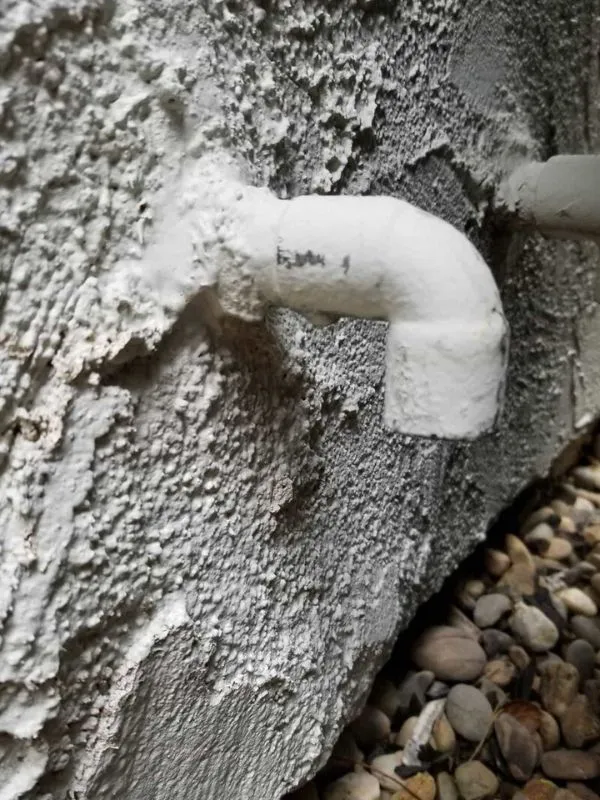A condensate drain line is integral to a home's HVAC system.
The drain line helps keep the interior environment comfortable by removing excess moisture from the air.
It also prevents water damage if too much moisture builds up in walls, floors, and other areas.
This article will provide information on what a condensate line is, what it looks like, what benefits it provides, how to maintain it correctly, and what steps should be taken if there are any issues with the system.
📗 Key Takeaways
- Understand the Role: Recognize the importance of the condensate drain line in maintaining a comfortable interior environment and preventing water damage.
- Regular Inspection: Periodically check the condensate line for clogs and signs of malfunction, such as visible water near the furnace or a non-operational AC system.
- Effective Unclogging: Familiarize yourself with various unclogging methods like using a drain snake, CO2 gun, and wet and dry vacuum to address blockages promptly.
- Consistent Maintenance: Ensure regular cleaning, flushing, and proper securing of the drain lines, and consider installing an in-line filter to prevent debris accumulation.
What is a Condensate Drain Line, and What Are Its Benefits?
A condensate line collects and transports condensation from warm air in contact with cold surfaces or objects within your HVAC system.
The purpose of the drain line is to keep the interior environment comfortable by removing excess moisture from the air.
It also prevents water damage if too much moisture builds up in walls, floors, and other areas.
The benefits of having an HVAC drain line include improved comfort levels inside the home, reduced chances of mold and mildew growth, and fewer repairs due to water damage.
Here's How It Works:
The air conditioner unit draws warm air from inside your home or building, then cools it using refrigerant before sending it into your home.
As the warm air passes over the colder evaporator coil, condensation forms and collects in a drip pan.
This condensate drain pan is connected to a drain line that runs outside the house or building and into a safe area like a nearby sewer system.
The water is safely disposed of after passing through the drain line.
Sometimes, it may be connected to an interior drain near your indoor HVAC unit.
What Materials Are Used to Construct a Condensate Line?
Condensate lines are usually made from either PVC (polyvinyl chloride) or ABS (acrylonitrile-butadiene-styrene) plastic.
Both materials are highly resistant to corrosion and can be easily connected using standard household tools.
PVC pipes are typically used in residential applications, while ABS is often favored in commercial settings.
The material used also depends on the local building codes and what is available and more cost-effective.
Additionally, a condensate line may include a check valve and an air vent, which help keep the line free from debris and other contaminants that could otherwise cause clogs.
These components are usually made from either brass or stainless steel for durability and reliability.
Troubleshooting Issues with the System
If your AC condensate drain line is playing up, it's crucial to tackle it head-on.
Leaving a clogged condensate drain line unattended could lead to water damage and even put your HVAC system out of action.
So, how do you tell if your AC drain line is clogged?
Look out for these two tell-tale signs.
Firstly, if your AC system is on strike, a clogged drain line could be the culprit.
Secondly, if you spot clear signs of water near your furnace, air handler, or on your ceiling, it might be time to roll up your sleeves and get hands-on with some DIY.
The reason your air conditioner might stop working due to a clogged AC condensate line is that many systems have a "safe-t-switch."
When water can't drain from the system, it triggers this switch, cutting power to the air conditioning unit and sometimes even the thermostat.
Although not all systems come equipped with a "Safe-T" switch, we highly recommend installing one as a safeguard against potential water damage in your home.
But remember, a triggered safe-t-switch can mimic the symptoms of a faulty AC capacitor, so don't get the two confused.
Understanding Why Your AC Drain Line Gets Clogged
Ever wondered why your AC condensate drain line gets clogged?
The common culprits are often dust, debris, or some unwelcome critters like spiders and insects.
When we talk about bad filtration or dirty filters, they can cause dust to accumulate on the evaporator coil.
As your air conditioner hums away, the evaporator coil creates condensation.
This condensation acts like a mini shower, washing away the dust and debris from the evaporator coil right into your AC drain line. And voila! You've got a clog on your hands.
Moreover, debris from around your furnace or indoor air handler can find its merry way to the drain pan and the drain line, causing yet another clog.
But it's not just dust and debris playing havoc with your AC condensate drain line. Spiders and insects are also potential troublemakers.
When your air conditioner is out of action during the off-season, the P-trap in the condensate line dries up.
This provides a perfect home for spiders and insects to move in, spin webs, or lay eggs that block your drain line.
To prevent this, make sure to clean and unclog the condensate line at least once a year before the cooling season kicks in.
Wondering how to do it yourself? Check out the step-by-step guide below!
How To Unblock a Condensate Drain Line
The ease of unclogging a drain pipe depends on how the furnace, heat pump, or air conditioner was installed.
If you have been so lucky to have a removable P-trap or drain pan, removing and rinsing it in your sink should help clear any blockage.
Make sure to clean it thoroughly before putting it back in.
If a removable drain trap is not present, then the job becomes more difficult.
Some tools that can help unclog the HVAC condensate line are plumbing snakes or compressed air.
Cleaning the drain and the drain pan with vinegar and baking soda may also be beneficial. If these methods fail, contact a professional for assistance.
Using a Drain Snake
A drain snake is one of the most common methods for unblocking a clogged AC drain line.
To use a drain snake, you will need to remove any blockage at the opening of the drain line and then insert the auger into the pipe.
Slowly turn the auger to remove the debris until it reaches an obstruction. If this happens, pull the auger back slowly while turning it.
Repeat this process until all blockages have been cleared out and you have reached an open pipe area.
When inserting and removing the auger, proceed slowly and carefully, as you do not want to damage the drain line system.
Using a CO2 Gun
A CO2 gun is another effective tool for unblocking a drain pipe.
To use this tool, attach the cleaning tube to the gun and insert it into the drain line.
When you're ready, press the trigger and release a burst of CO2 into the pipe.
This should dislodge any debris or obstruction and clear out the blockage.
Once the blockage has been cleared, remove the tube from the pipe and repeat this as needed.
The air conditioner unit draws warm air from inside your home or building, then cools it using refrigerant before sending it into your home.
As the warm air passes over the colder evaporator coil, condensation forms and collects in a drip pan.
This condensate drain pan is connected to a drain line that runs outside the house or building and into a safe area like a nearby sewer system.
The water is safely disposed of after passing through the drain line.
Sometimes, it may be connected to an interior drain near your indoor HVAC unit.
Using a Wet and Dry Vacuum
A handheld or shop vacuum is an effective way to unblock your air conditioner's drain line condensate drains.
To begin, connect the vacuum hose to your air conditioner's drain line and turn on the power supply.
Once activated, the vacuum will draw out any debris or blockage from the AC condensate line using suction.
After clearing any obstructions, turn off the power supply and remove the hose from the pipe.
Repeat this process if necessary until all of the blockages are gone.
Finally, ensure the line is pitched correctly; it should slope down towards its termination point outside your home or building for gravity to help it drain properly.
If none of these solutions fix the issue, then it's best to contact a professional for help.
Maintaining an AC Drain Line
Maintaining a condensate drain line is essential for keeping your HVAC system running smoothly.
First, inspect your pipes regularly for any wear or damage.
If you notice any issues, address them immediately, as minor problems can quickly become major ones if left unmanaged.
Additionally, flush and clean the lines regularly to remove debris, dirt, and blockages that could disrupt water flow.
Another easy step is to install an in-line filter in each pipe to prevent small particles from entering and causing blockages.
Lastly, ensure that all drains are properly secured with screws and washers, so they do not come loose over time or with use.
All of these steps will help ensure that your condensate drain lines are clean and functioning correctly.
💧 Final Thoughts
The drain line and condensate pan are essential for a properly functioning HVAC system, but it can be prone to blockages due to debris and dirt.
Keeping the lines clean is key and can be achieved by regularly inspecting them, flushing and cleaning them, installing filters, and securing all drains with screws and washers.
With regular maintenance and care, you can ensure that your condensate drain lines remain unblocked and keep your cooling system operating at full efficiency.
Want to learn more about your home's heating and cooling system? Check out our other HVAC articles!
Scott Harding
Scott is the main author of DIY Home Comfort. He's also an experienced HVAC technician that enjoys home renovation and spending time with his family. You can find out more about him here.








